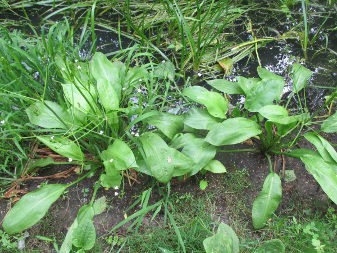
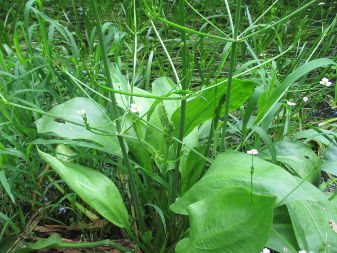
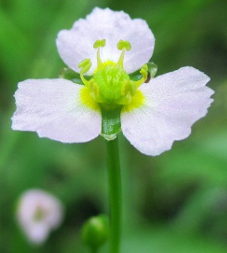
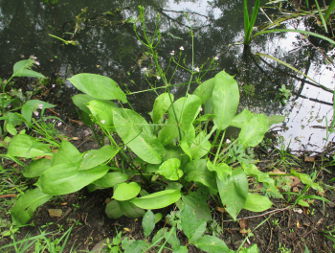
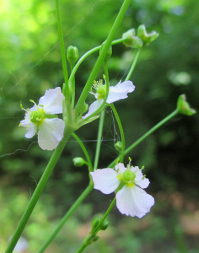
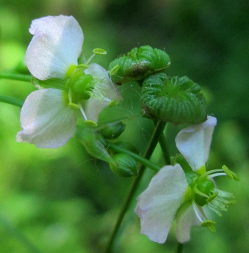
Water-plantain (Alisma), fam. Alismataceae.
A perennial herbaceous plant, growing along the rivers and lake sides. In particular, it has been found in Darnytsia river, and while in spring it grew straight from the water, the watercourse became dry by summer, and the water-plantains appeared though in humid soil but separated from water. This plant can also bear the opposite extreme – complete flooding. Then it develops leaves of a special kind – long and linear, which is easily bent by water streams and stretches to the surface. The normal leaves of Alisma plant reminds large Plantain, which gave the name of one its typical species – Common Water-plantain (Alisma plantago-aquatica).
The area of this plant is very large, covering most part of temperate and subtropical zones of both Northern and Southern Hemispheres. In Kyiv climate it blooms in June-July. The flowers are small, with three sepals and petals, which is a rare number for plants (compare also with Spiderwort and Asiatic Daylower). The branched flower spike seems rather superfluous for these unshowy flowers, even though there can be several tens of them on a single plant on a given day.
The juice of Water-plantain is toxic, can cause skin irritation and animals posioning. Despite that, like many other water plants – Common Reed, Wood Club-Rush, Cattail, Flowering Rush, Arrowhead (Duck-potato, Sagittaria), Yellow Water-lily and White Water-lily (Nymphaea), – Water-plantain has starchy rhizomes, which are edible when cooked. Drying Water-plantain also reduces its toxicity significantly.
Due to being poisonous, Water-plantain use in medicine is rare and limiter, and its chemical composition is poorly known. It has diuretic, antibacterial action, ability to eliminate kidney stones, and to suppress lactation in breastfeeding women.
Water-plantain is used for ornamental design of ponds and pools. However, it is capable of excessive self-propagation, which should be kept under control.